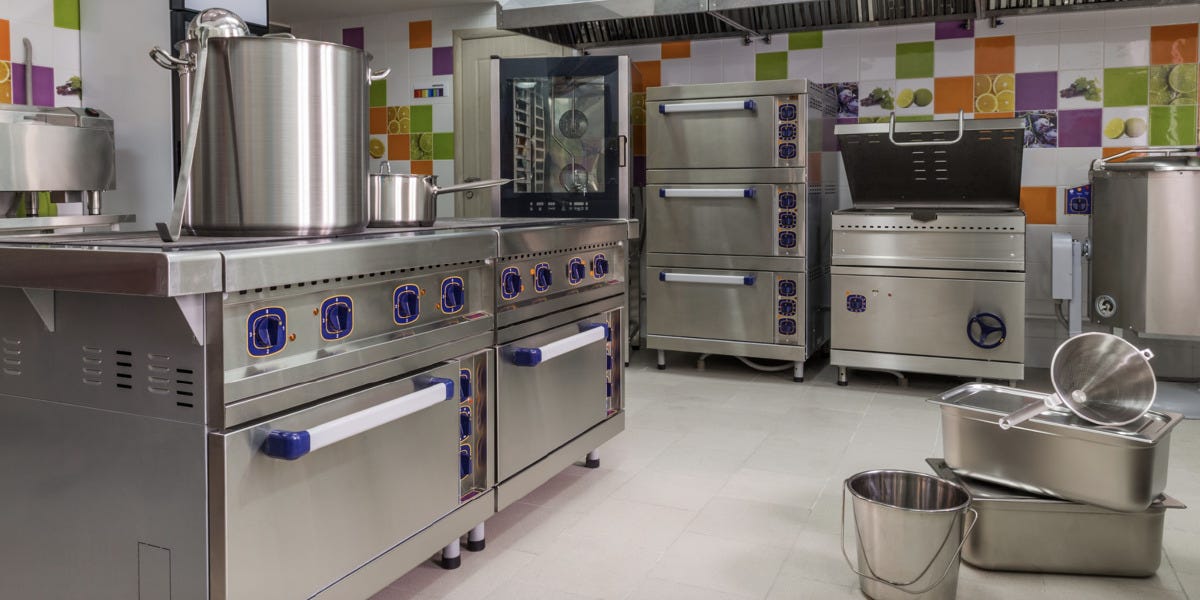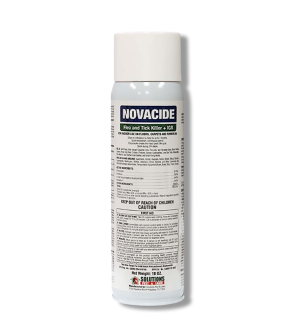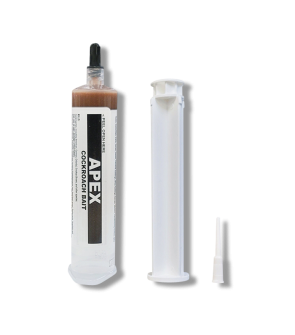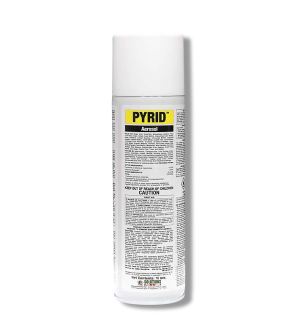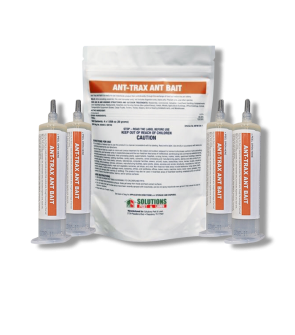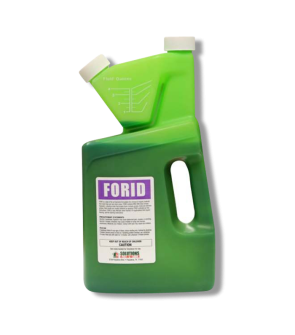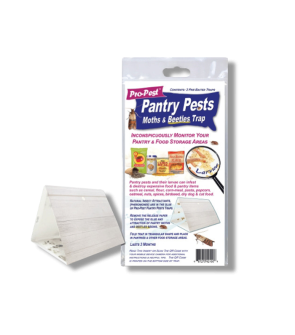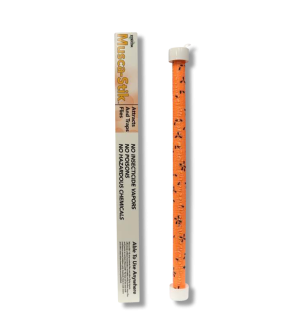Insects in Commercial Kitchen
Most Effective Products
Common Insects in Commercial Kitchens
While your establishment may be popular with customers, it does also attract other unwanted guests like pests. Common commercial kitchen pests such as ants, cockroaches, drain flies, fruit flies, and indianmeal moths are all something a business owner should be concerned about.
Food contamination, potential structural damages, and possible negative feedback from customers caused by pests is something no business should encounter. Pests can also constitute a major food safety concern, because they can cause both physical and biological food risk.
One pest sighting in your commercial kitchen, could mean the difference between a 5-star review and negative feedback either in-person or online. For these reasons, it’s important to take the necessary steps to prevent them with this DIY guide.
If you are seeing a pest not listed here in your commercial kitchen, then contact our customer service team by phone, email, or stop by one of our stores for professional advice and product recommendations.
Ants
They may seem so small, but ants can be a big nuisance when they enter your commercial kitchen.
They can make these spaces feel uncomfortable when they invade in large numbers in areas you store food or when they bite staff. On top of being annoying to have around, they can be hard to get rid of.
Identification
 Various types of ants can invade your commercial kitchen so we will focus on a few general characteristics that define them from other insect species.
Various types of ants can invade your commercial kitchen so we will focus on a few general characteristics that define them from other insect species.
Depending on the species, ants can vary from miniscule to a large size of 1 inch. Most species of ants will range in black, red, brown, yellow, white, or a combination of multiple colors.
They will also have a pair of antennae, 6 legs, 3 body segments, and if they are classified as reproductive ants then a pair of wings.
Inspection

Ants will travel to any part of your commercial kitchen that supports food, water, and shelter.
Areas such as walls, appliances, trashcans, plumbing under and around sinks, shelves, boxes and cabinets used for food storage, and cracks/crevices in the floor or wall are prone to ant infestations.
Treatment
Step 1: Clean Commercial Kitchen
 Ants are drawn to unclean food spills, unattended garbage cans with organic food matter, and stagnant water.
Ants are drawn to unclean food spills, unattended garbage cans with organic food matter, and stagnant water.
Store leftover food in a sealable plastic container and clean and dry dishes left in the sink. Sweep up the floors and mop to remove food crumbs, grease, and other food odors.
Secure trash can lids both indoors and outdoors to avoid attracting ants. Take bags that contain food waste outdoors and keep the bins several feet away from your structure foundation.
Dry up any stagnant water in sinks, on floors and walls, and under appliances. Address any possible repairs for leaky pipes and water-logged roofs.
Step 2: Use Ant Baits
 Ants send their workers to collect or create trails to food for other members of its colony to find. That being said, laying out ant baits could help to control the entire infestation completely.
Ants send their workers to collect or create trails to food for other members of its colony to find. That being said, laying out ant baits could help to control the entire infestation completely.
Ant-Trax Ant Bait is an attractive ant gel bait that comes in a convenient syringe for easy application. Formulated with imidacloprid and a variety of irresistible food lures this product will work slowly to eliminate ants.
Determine how much Ant-Trax Ant Bait to use by measuring the square footage of the treatment area. To do this, measure the length and width of the treatment area in feet then multiply them together (length X width = square footage).
Apply 0.006 (4 drops) of Ant-Trax Ant Bait per square yard or 0.066 (46-47 drops) per 100 sq. ft.
Place this product as rounded spots or thin beads into cracks and crevices and as a spot application.
Use Ant-Trax Ant Bait close to foraging ant trails, and under baseboards, sinks, countertops, seats, around water pipes, water heaters, dishwasher equipment, and in cracks and crevices where ants harbor.
Do not use this product on food preparation surfaces and away from food and food contact surfaces.
If bait contacts an exposed food surface where food is handled, remove Ant-Trax Ant Bait and wash exposed surface prior to use.
Cockroaches
If you own or manage a commercial kitchen, then you know how bad it can affect your establishment when a customer sees a roach. These pests can impact your business and those frequenting it in several ways.
Cockroaches are known to spread harmful bacteria and often defecate or shed body parts in the areas they travel. In addition to being adaptive to their surroundings, they are also excellent in hiding in dark voids to avoid pesticide treatments and breed.
Identification

For a visual reference look at the image above: On the left is the German cockroach and on the right is the American Cockroach
There are a number of roach species that may be getting into your commercial kitchen. The most common ones are German cockroaches and American cockroaches.
American roaches are large reddish-brown roaches with a yellow line that outlines the back of their head. They measure up to 1.5 inches or more and have wings capable of flight. Rarely do they fly, preferring to run or crawl instead.
German cockroaches are small roaches that are light brown to tan in color with two dark parallel lines behind their heads. They do have wings, but they rarely fly, instead they run very quickly from each location.
In size, they measure 1/2th of an inch in length making them much smaller than other roach species like the American cockroach.
Inspection
Cockroaches love warm, enclosed spaces near moisture and food such as shelves, cabinets, cardboard boxes, and cracks and crevices in or near food preparation spaces and counters.
Treatment
Step 1: Keep Kitchens Clean
A common theme with most roach species is they are searching for food and water sources, which your commercial kitchen readily provides.
It’s important to store all exposed food in plastic containers with sealable lids. We also recommend throwing away cardboard boxes and switching them out with plastic containers to keep roaches out.
Never leave food crumbs, grease, or water out on surfaces or under appliances. Sweep, vacuum, and mop all areas where food is kept or prepared.
Clean out dirty dishes and trash cans as soon as possible since these sites are an open invitation to roaches. Bring trash to an outside bin that is several feet away from your structure foundation and has a sealable lid.
Wipe down the walls, floors, sinks, around plumbing, and behind appliances of any moisture buildup. Consistent leakage will need to be properly addressed.
Step 2: Use Roach Baits
When water and food has been secured, they will seek other food sources which is where roach baits come into play.
Most roach baits contain an insecticide and food combination that helps to kill roaches and spread the material to those in hard to reach areas for complete elimination.
Apex Cockroach Gel Baits is an effective gel roach bait that is made with 11 different attractants to lure and kill various roaches.
To control small roaches like German cockroaches, you will need to apply 3 drops of Apex Cockroach Gel Bait, or approximately 0.0047 oz. of product per square yard.
To control larger roaches like the American or oriental cockroaches, you will apply 5 drops of product, or approximately 0.0071 oz. of product per square yard.
Applications in food/feed handling establishments are limited to crack and crevice treatments only.
Place this product under baseboards, sinks, countertops, seats, around water pipes, water heaters, dishwasher equipment, and in voids where roaches harbor.
Do not apply this product to food preparation surfaces. Keep gel away from foods and food contact surfaces.
If Apex Cockroach Gel Bait contacts an exposed surface where food is handled, remove the bait and wash the exposed surface prior to use.
This product will kill roaches slowly, but this is so the material has enough time to be spread to roaches hiding in tight crevices where standard insecticides cannot reach.
Drain Flies
Drain flies are small annoying flies that look for food and water around the fixtures in your commercial kitchen.
The reproduction rate for these pests are very high with new eggs hatching every 48 hours making control a critical race against time.
They are not directly harmful to people, but they can trigger asthma in certain individuals. Combined with this possibility and their knack for growing large populations makes drain flies a potential health hazard for commercial kitchens.
Identification

Inspection

Treatment
Step 1: Keep Drains Clean

There are a number of ways to clean drains affected by drain flies, but we strongly recommend Forid Drain Gel Cleaner.
Forid Drain Gel Cleaner is an organic microbial grease degrader that breaks down organic material and waste, which will eliminate drain fly food sources and their breeding grounds.
Pour 1 to 2 gallons of warm water into each drain to be treated. Add 4 oz. of Forid Drain Gel Cleaner to each drain.
Apply this product around the edge of the drain, attempting to coat each side of the drain.
Repeat dosage daily as necessary, which is usually every 5-7 days. Continue to make these applications every 1-2 weeks.
For all applications, apply the product at the lowest time of day when drain is used. Ideally applications are best done at the end of the day and after the use of all cleaning and sanitization products.
Step 2: Spray Pyrid Insecticide Aerosol
If you see any drain flies directly in your line of sight then eliminate them with an aerosol insecticide spray.
Pyrid Insecticide Aerosol is a effective aerosol insecticide that kills a wide range of crawling and flying pests like drain flies on contact within restaurants and food areas of food handling establishments.
Apply Pryid Insecticide Aerosol only as a direct application for drain flies in the sites mentioned above.
Spray Pyrid Insecticide Aerosol from a distance of 18-24” inches from the surface. Make short bursts into the area where you visibly see drain flies.
Do not exceed 10 seconds of spraying per 100 sq. ft. for commercial areas.
Fruit Flies
Fruit flies are one of the most invasive pests in commercial kitchens throughout the year. From buzzing around sink drains to nesting on food sources sitting on the counter can drive anyone insane.
These pests feel impossible to get rid of since they breed very quickly with eggs hatching in 12 hours. Larvae then grow into adults within 4 days, which in return ripen fruit and vegetables with their feeding activities.
Identification
Fruit flies are small oval shaped flies that measure 1/8th of an inch in size. The color of fruit flies are usually brown or tan for their thorax and their abdomen is gray underneath and black on top.
Their most noticeable feature is their bright and bugged out red eyes.
Inspection

Treatment
Step 1: Deep Clean

A deep clean around and under kitchen appliances and food prep sites are necessary.
Hidden breeding grounds under refrigerators, sinks, and other food preparation sites will need to be sweeped and mopped up. Any sites collecting grease will also need to be cleaned.
Storing food in plastic sealed containers becomes not only vital for fruit fly control, but also ensures food safety.
Keep up with expiration dates and quality of food as older food items will attract these pests. Dispose of older food items in an outdoor trash can that is several feet away from your building structure.
Even if you have taken the necessary steps to cleaning these pests will find the smallest of food sources so sites like your drain will need to be addressed.
Use Forid Drain Gel Cleaner to eliminate food in drains that fruit flies could feed or breed in.
Apply 4 oz. of Forid Drain Gel Cleaner per drain. Pour the Forid around the lip of the drain so that it coats and runs down the sides of the drain. Repeat the process daily for 5 to 7 days.
For drains that are not frequently used, you need to let 1 to 2 gallons of warm water flow through the drain before application.
Step 2: Set out Traps

Musca-Stik is a ready to use fruit fly trap that controls these pests with a safe, non-toxic lure and design. Allows easy capture on countertops and other sites for numerous days.
Gently open the included attractant granule package and sprinkle over the entire length of the product or into the cap end.
Set the Musca-Stik wherever fruit flies are a problem: countertops, kitchens, display cases and dining areas. However, keep in areas where pets and people cannot easily reach this product.
Occasionally inspect the trap entrance and keep it free of debris.
Replace the Musca-Stik when it becomes filled.
Step 3: Spray Pests Directly
Keep your commercial kitchen further protected by fruit flies by spraying these pests directly with a contact insecticide aerosol like Pyrid Insecticide Aerosol.
Use only as a direct spray application in food areas of food handling establishments.
Hold the Pyrid Insecticide Aerosol 18-24” from the surface to be treated where you see fruit flies.
Spray in short bursts and allow the material to drift onto pests, but do not exceed 10 seconds of spraying per 100 sq. ft. in commercial areas.
Indianmeal Moths
Indianmeal moths are found more than any other pantry pests in commercial kitchens. Adult moths lay their eggs in the food stored in kitchens then the egg hatches into larvae, which is the most damaging stage of this pest.
The larvae devours whatever it can and in the process also contaminates food with droppings, egg shells, shed skin, and webbing. Not only does this hamper the quality of food, but becomes a costly solution to replace the spoiled food items.
Identification
Adult indianmeal moths are 1/2 an inch in size and have a 3/4th of an inch wingspan. In color, they vary between one half of their wings being a light brown in color, and the other half dark brown in color with dark streaks.
Indianmeal moth larvae are cream colored worm-like pests with dark brown heads. They can also be pink, brown, or almost green-ish in color. The larvae are about 1/2 an inch in size.
Inspection
Indianmeal moths are primarily found in food packaging kept in commercial kitchens. Bag or cardboard fox items they like to infest are grains, dried fruits, nuts, cereals, spices, flour, bread, pasta, chocolate, dried soup mixes, and other processed foods.
Treatment
Step 1: Clean Pests Out
As with most stored product pests, indianmeal moths live in the food they are eating. They will also travel to another food source and harbor in the crevices of food storage sites.
For this reason, control first needs to happen with prompt disposal of all food items in the site where indianmeal moth activity has occurred.
Unfortunately, one food item is a clear indication that other food stuff is also infested. Make sure to take tossed out food to an outdoor garbage can with a sealable lid. Ensure these bins are several feet away from your structure foundation.
When shelves and sites are empty, begin vacuuming the corners, top and bottom, and floors of food storage sites and shelving.
Leave shelves empty until the following steps are completed.
Step 2: Spray Pests
The most effective way to ensure indianmeal moths are dead is to spray them directly with an insecticide aerosol like Pyrid Insecticide Aerosol.
Apply Pyrid Insecticide Aerosol as a crack and crevice treatment or direct spray in food areas of food handling establishments.
Spray Pyrid Insecticide Aerosol from a distance of 18-24” inches from the surface to be treated for direct spray applications.
For crack and crevice treatments, insert the applicator straw into the nozzle. Next, place the tip of the straw into cracks, crevices, and voids where this pest may be hiding.
Spray along the length of cracks and crevices for 1 second per 3 ft for light infestations. For heavier infestations, move the straw at a rate of 1 second per 1 ft.
Do not exceed 10 seconds of spray per 100 sq. ft. of commercial areas.
Step 3: Spray Novacide Flea & Tick Killer
The rest of the commercial building will need to be treated with a residual insecticide to control indianmeal moths.
Novacide Flea & Tick Killer is an aerosol insecticide that has a built in insect growth regulator and adulticide that kills pests on contact. For up to 7 months after spraying, any pests that contact treated areas will stunt in their growth or be killed.
Apply Novacide Flea & Tick Killer only to areas in commercial buildings where food is not prepared, served, or processed.
A 20 oz can of this product can cover 2,625 sq. ft. indoors.
Hold the Novacide Flea & Tick Killer upside down and begin spraying in a sweeping motion away from the floors.
Exit area immediately and remain outside the treated area until aerosols, vapors, and/or mists have dispersed.
Step 4: Lay Out Traps
Even with a strong insecticide treatment program and sanitation efforts, there is still a potential of bringing in indianmeal moths.
Often, laying out several traps can help determine when these pests are active and take on the previous treatment steps.
Pro-Pest Pantry Moth & Beetle Traps are pre-baited glue traps that lure and capture indianmeal moths and other pests for up to 3 months after application.
Fold the Pro-Pest Pantry Moth & Beetle Traps into a triangular shape and place them in pantries and other food storage sites.
One of these traps will cover every 100 to 300 sq. ft.
Dispose of Pro-Pest Pantry Moth & Beetle Traps when full or in 90 days.
Key Takeaways
Common Bugs in Commercial Kitchens
- Common bugs you will see in commercial kitchens are cockroaches, indianmeal moths, ants, fruit flies, and drain flies.
How to Prevent Pests in Commercial Kitchens
- The best way to prevent pests in commercial kitchens is with regular cleaning, storage of food in plastic containers, and periodic insecticide applications.
What Causes Pests in Commercial Kitchens
- Pests are attracted to any food or water source whether that be crumbs, grease, water around or under pipes, or food odor on preparation sites are enough to attract these bugs.
